……………………………………………………………………………
"Calligraphy is as different as people's faces."
Unknown
……………………………………………………………………………
Sample Zoom Chinese calligraphy sessions with Peter Ly
……………………………………………………………………………
"Year of the Ox" Calligraphy demonstration by Peter Ly (22:55)
……………………………………………………………………………
The following are videos of Peter Ly demonstrating Chinese Calligraphy in Markham Ontario.
Lishu Calligraphy
"Dot" (43:45)
"Stroke" (1:12:32)
"Throwing & Kicking Stroke" (56:33)
"Hooking Strokes" (46:13)
"Combining Characters" (39:45)
"Combining Characters Pt 2" (52:12)
"Brush Hair Discussion, Stroke Review, Characters" (1:18:16)
"Review, Folding paper for poetry, Complex Characters" (54:10)
"Folding Red Paper & Poetry Samples" (1:03)
"Indepth Discussion of Character Structure" (35:30)
"Chinese Lunar Calendar" (35:27)
Lishu Calligraphy
"What is Chinese Calligraphy-Part 1" (34:37)
"What is Chinese Calligraphy-Part 2" (1:11:43)
"Calligraphy Structure" (52:00)
"Lishu Calligraphy" (1:20:39)
"Detail of Dots & Strokes" (43:13)
"Method & Order of Strokes" (51:35)
"Character Structure-Top to Bottom" (1:03:49)
……………………………………………………………………………
Chinese Calligraphy and Iaido
Chinese calligraphy is the writing of Chinese characters as an art form, combining purely visual art and interpretation of the literary meaning.
Iaido is a Japanese martial art that emphasizes being aware and capable of quickly drawing, cutting and sheathing of the sword.
Can these two art forms, which appear to be totally different from each other, have any common elements?
Chinese characters combine a series or group of brush strokes to represent a word or expression. The basic element of the brush stroke is either a dot or a line. There can be many variations of brush strokes.
Iaido combines a pattern of techniques which is called a kata. Although there is a greater number of Chinese characters compared to the number of Iaido kata there are similarities. Characters can be “written” in different script styles. Certain kata can be performed in a different style or school. This does not apply to all kata whereas all Chinese characters can be illustrated in a different script.
Chinese characters are composed of a variety of elements. Dots and strokes are combined to form a character. For each script style there are various different types of dots and strokes. For each kata in Iaido there are also various different elements. These elements vary depending upon the school from which the kata originates.
Each of the two art forms require correct form and patience. You might improve your skill but with most things you will never be a master. There is always room for improvement. You must hold the sword properly just as you must hold your brush properly. The grip is surprising similar for both art forms. The correct grip should be soft and flexible. If the grip is too forceful you will not have efficient range of movement.
For Iaido it is important to have correct body posture. As a general rule, your hips should be square to your opponent. Your feet should be properly aligned, your shoulders relaxed and your mind aware of your surroundings. The same applies to calligraphy. You should sit (or stand) squarely facing the paper upon which you will be painting. Yes, you are actually painting. You may not be painting a landscape but you are still painting a character. The brush is held firmly but not tightly. There should be flexibility in your wrist, arm and shoulder. The same concept applies to Iaido.
When painting you must visualize the proper size and placement of each character. Iaido requires you to visualize your invisible opponent so that you can place your sword at the proper position during the various elements of the kata. For each art there is a certain flow to your movements. The beauty of each is expressed with the movement and timing of motion. With greater experience comes greater achievement.
With Iaido and calligraphy there is a certain form of opening or beginning. For Iaido there is a beginning and ending etiquette. For calligraphy one must be in the proper mindset to begin. Visualize what you are going to paint. Even if you are “just practicing” you should practice as if it was the “real” thing or demonstration. Both art forms should have a certain amount of calmness but should also show determination. Practice your techniques so that they become natural.
Without going into greater detail of either art form, are there similarities between Iaido and calligraphy?
The more I practice each I have realized that they are almost one and the same.
……………………………………………………………………………
*…………………………………………………………………………
"Keep Learning"
"You don't have anything bothering your mind, you read many books, keep learning."
"A Book holds a House of Gold"
Alternative translations:
"Wealth can be gained through diligent study/learning/knowledge"
"If you study hard, you can get what you want"

"Spend a Full Moon" (Lishu style of calligraphy)
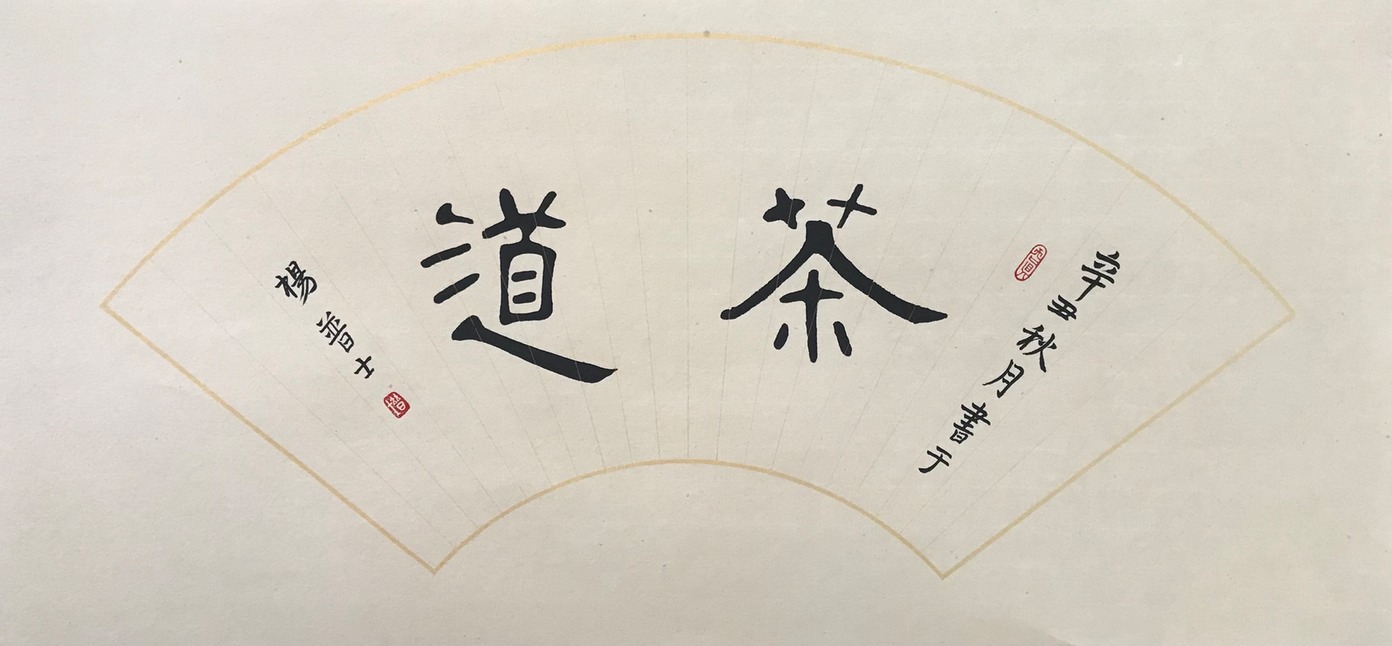
"The Way of Tea"
(Lishu style of calligraphy)
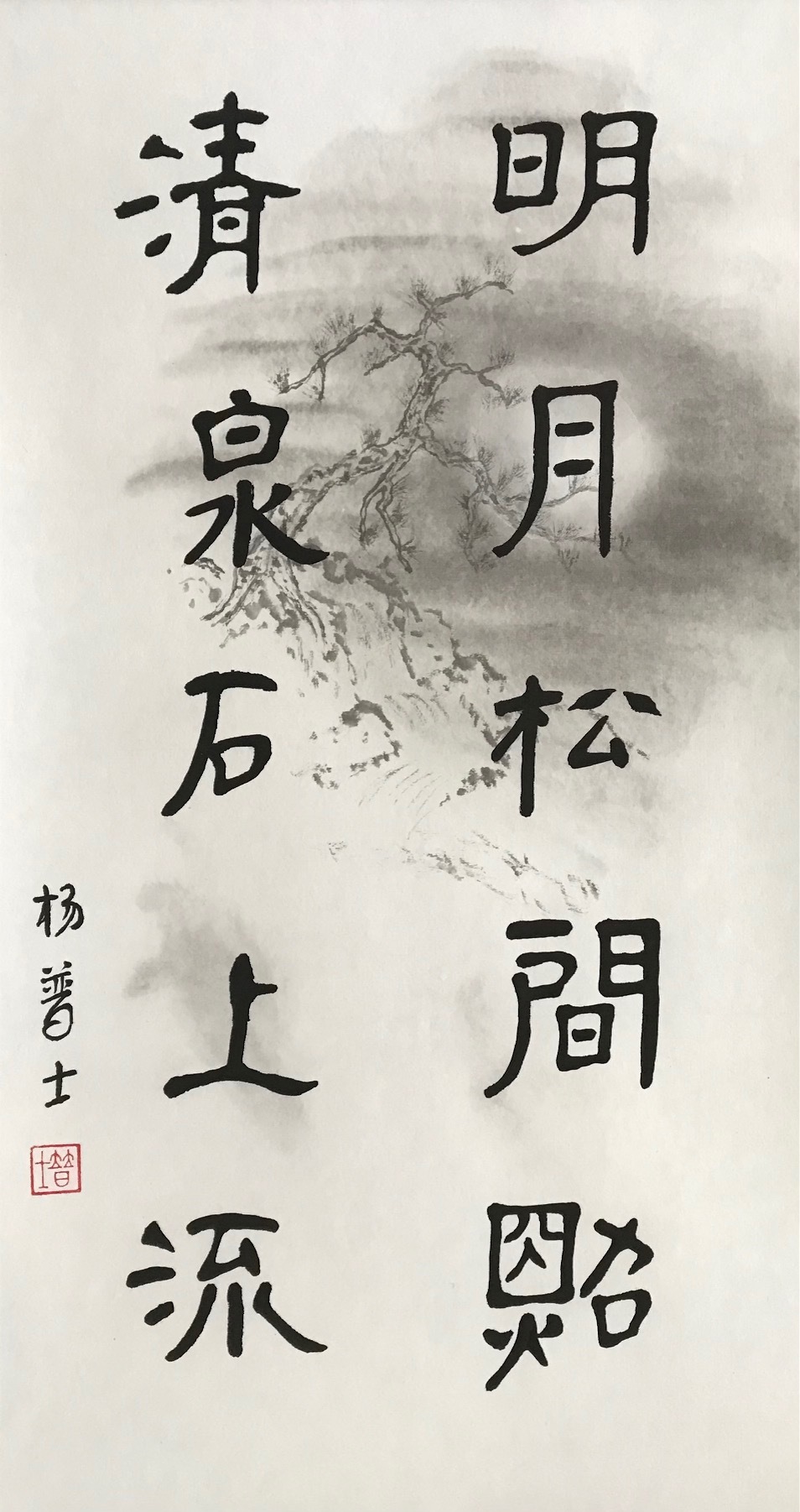
"Moonlight Pines 明月松間照"
(Lishu style of calligraphy)
"The clear/bright moon cast its light on the pine woods,while the purity/clear creeks water flow above the stones."
Here is a video of Peter Ly describing his calligraphy of "Moonlight Pines"
"Learn from all sources."
"If it's worth doing, it's worth doing well."
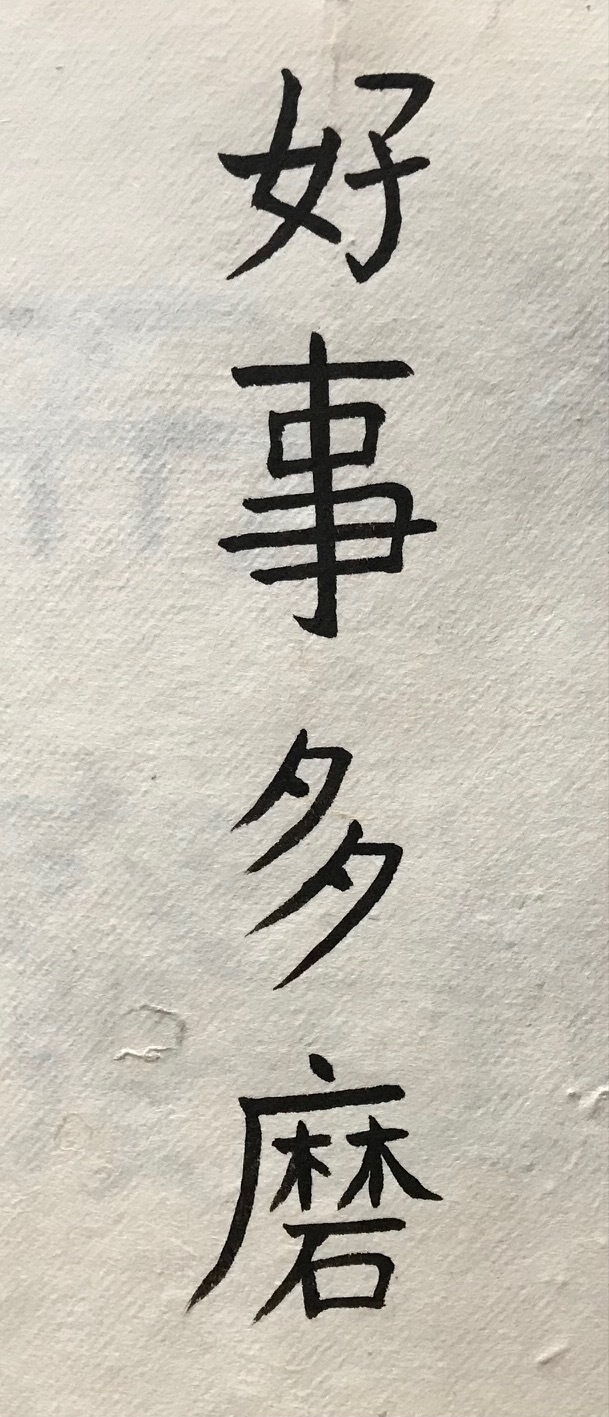
"Nothing good is ever simple."
(Sample of "burnt" calligraphy)
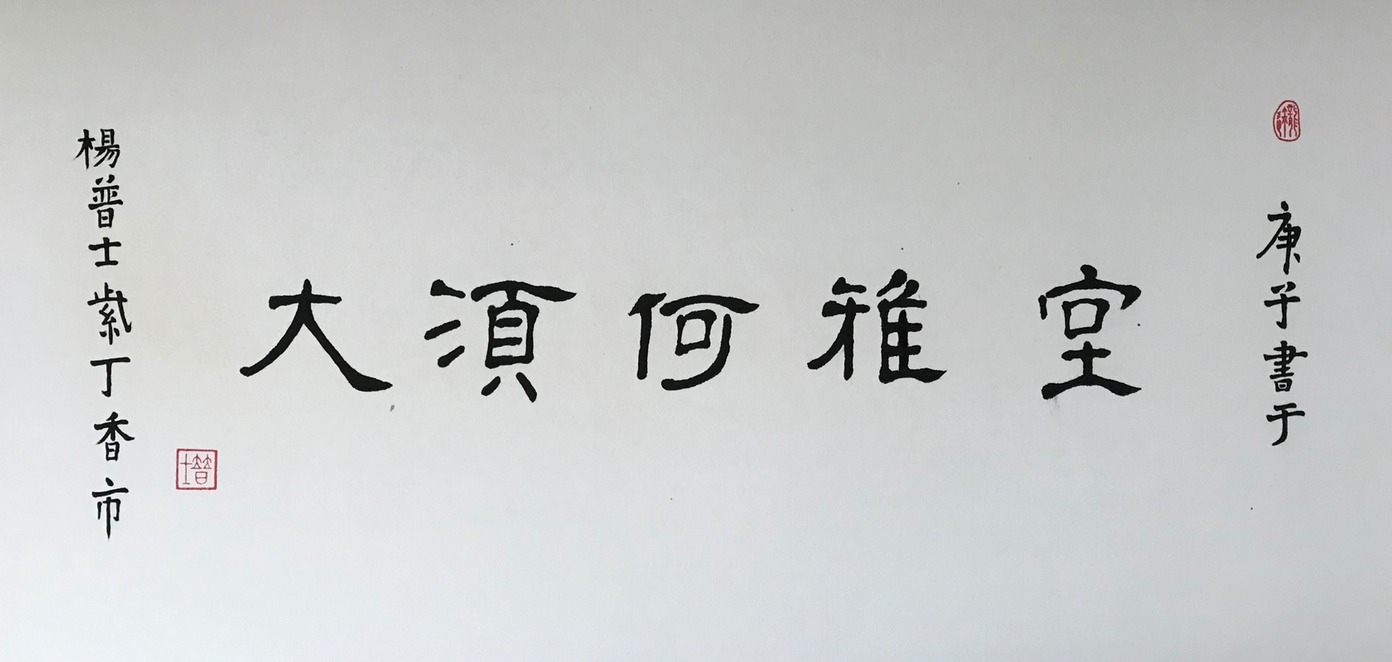
"Home Sweet Home Doesn't Have to be Big."
(Lishu style of calligraphy)
室雅何須大
Shi Ya He Xu Da(Mandarin)
Sut Ngaa Hall Xui Dye(Cantonese)
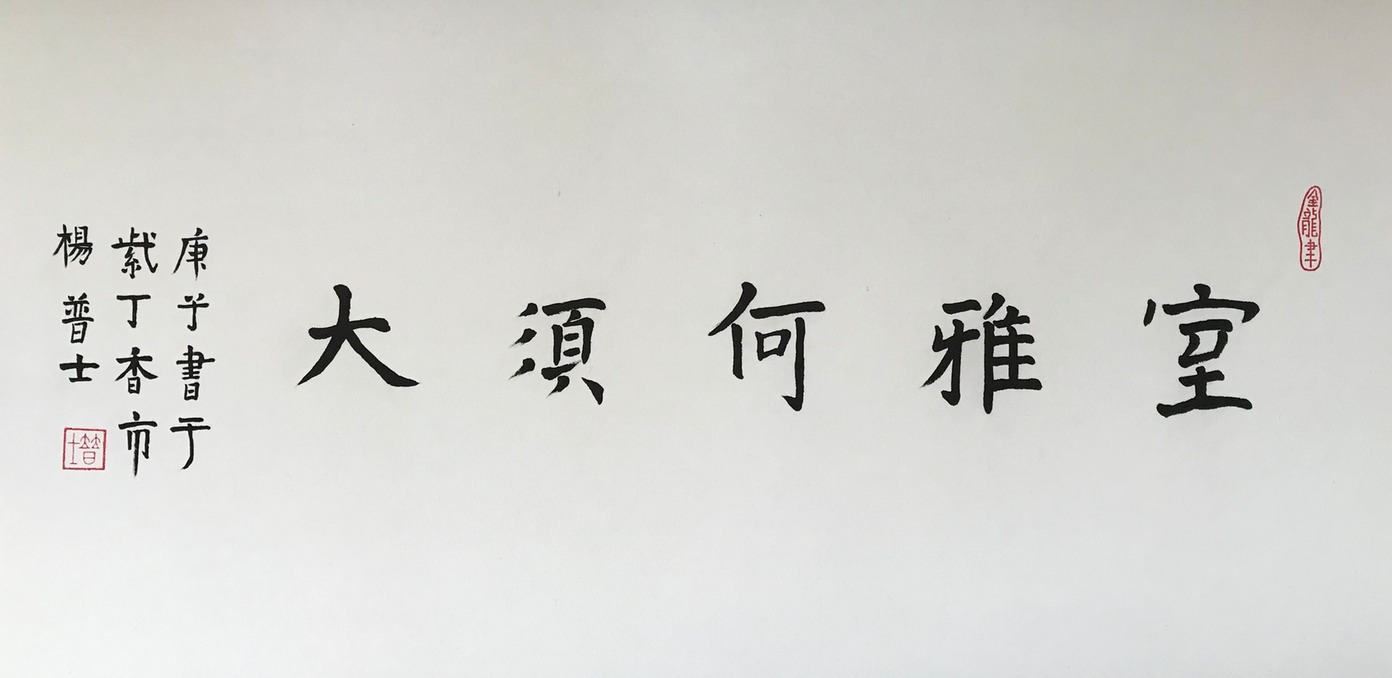
"Home Sweet Home Doesn't Have to be Big."
(Kaishu style of calligraphy)
"Have a Long Life."
(Kaishu style of calligraphy)
"Chinese calligraphy is a beautiful art form that can be presented in many ways. Some calligraphy is almost unrecognizable, and some is just a collection of random brushstrokes."
"Maintain the positive energy of heaven and earth, learn from history to be a better person."
送柴侍御
Below is the briefing (Chinese version) of above poetry.
送柴侍御
是唐朝诗人王昌龄所作的一首七言绝句。这是作者贬龙标尉时写的一首送别诗。诗中写与好友分离,自然不免有点儿伤感,但作者却宽慰友人:我们虽阻隔青山,却可以“同云雨”,虽人分两地,却可以共明月,因而没有一般送别诗通常所流露出的那种缠绵悱恻的情绪,确是构思新颖,别具一格,蕴含深刻,更见情深。
English version:
"Sending wood to the royal family" is a seven-word sentence made by the Tang Dynasty poet Wang Changling. This is a farewell poem written by the author when he was demeaning. "The poem is written separated from friends, naturally a little sad, but the author is relieved friends: although we block the green mountains, but can "with the clouds and rain", although people are divided into two places, but can be a total of the moon, so there is no general send goodbye to the poetry revealed the kind of haunting mood, is indeed a novel idea, unique, contains profound, more deep feelings.
Canadian National Academy of Arts "ArtWorks I" online exhibition
The following is a Samurai created with actual Chinese characters and strokes.
The following is the translation of the Chinese characters and strokes.
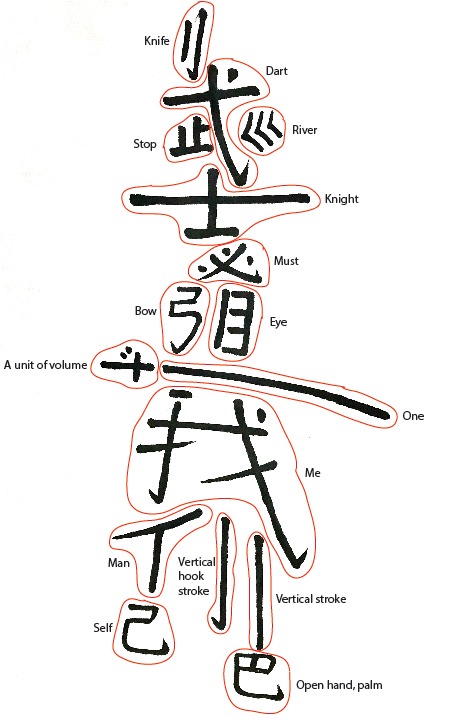
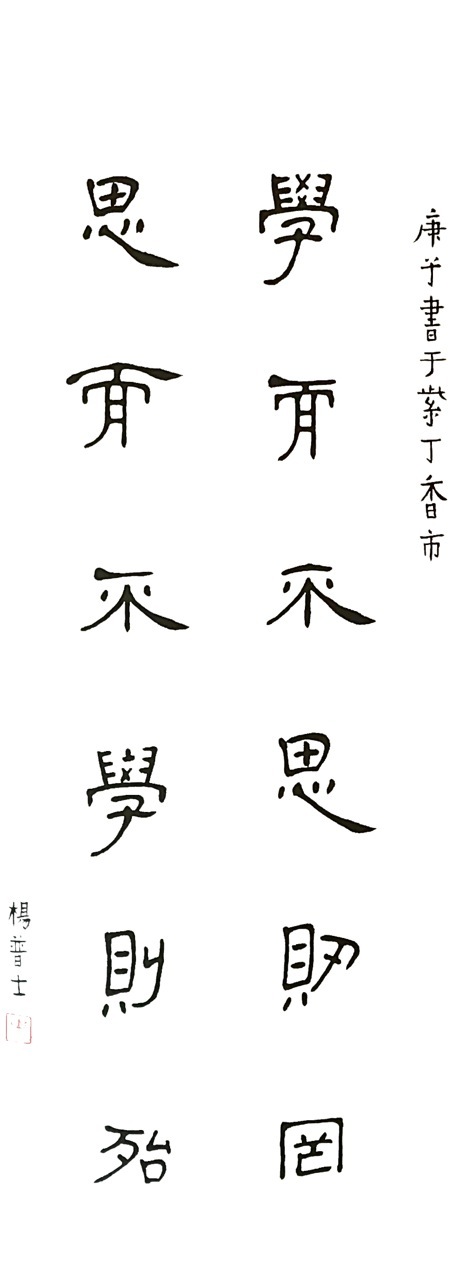
"Learning without thought is labour lost; thought without learning is perilous."
"East West Art"
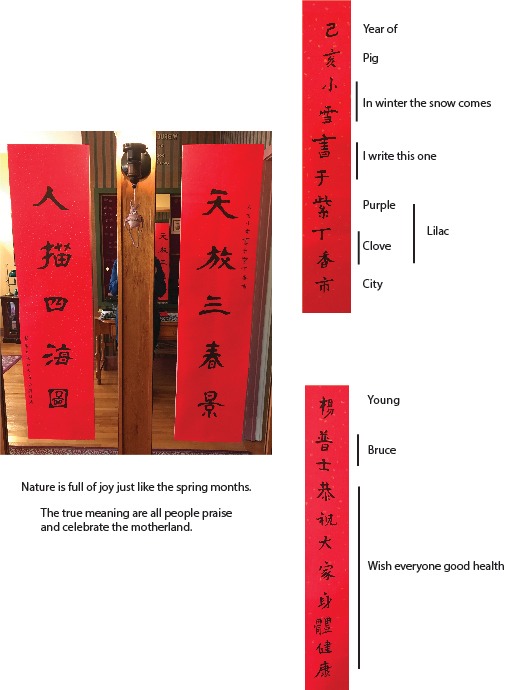
……………………………………………………………………………
The origin of LiShu
The evolution of Chinese characters in China is constantly simplified with the development of society. The LiShu began during the Warring States period - the LiShu evolved from the subject of the time (about 400 years BC) about 2,500 years ago.
The name of LiShu is one of the eight bodies of QinNi-(the original name of LiShu) which is a solemn font common in Chinese characters.
Different names vary from age to age;
QinNi: The early days of the Qin Dynasty NiShu (evolved from the QunNi) pen method to take the square/ square pen, near the book - Hanli: is the main body of the Han Dynasty commonly used. Also known as the "eight points" book.
The wind of the book becomes square, the knot body is wide flat, the counter-brush bursts forward, the wave is exposed, this typeface, because evolved into Han, it is called "Hanli".
GuLi, refers to the evolution between Qin Li and Han Li.
Present Li, refers to the evolution of Wei Jin after the book.
Rowing - Cross-section is the most basic stroke in the book, inherited from the book, the Tibetan head wrapped in tail, flat in the meable. To write full and steady, decisive, uniform thickness. Tibetan front inverted, bogey head. The round brush method must be transferred to adjust the stroke.
Square brush to fold the adjustment of the brush front;
(1) Move the brush inverse direction to the left;
(2) The brush is folded back to the right;
(3) The brush front is pressed along the center line to the right;
(4) Lift to the left after a slight pause.
Vertical -
The vertical drawing is roughly the same as the horizontal painting, except that it is changed from horizontal to vertical. In addition to the requirements of cross-writing, pay attention to the brush when avoid writing a letter of the hanging.
Ask for a natural close- or skip a brush.
(1) The brush front is retrograde upward;
(2) The brush is folded back and down,
(3) The round brush is used to make a turn,
(4) The square brush is broken by the way;
(5) The center micro-lift press down to run;
(6) The brush-forward is naturally up after the stroke.